Warning: Graphic content, readers’ discretion advised. This article contains a recollection of crime and can be triggering to some readers discretion advised.
On January 11, 2013, the body of Kendrick Johnson was discovered inside a vertical rolled-up mat in the gymnasium of Lowndes High School in Valdosta, Georgia, United States, where he was a student.

After a preliminary investigation and autopsy concluded that Johnson’s death was accidental, his family had a private pathologist conduct a second autopsy which concluded that he died from blunt force trauma. On October 31, 2013, the U.S. Attorney for the Middle District of Georgia announced that his office would open a formal review into Johnson’s death. On June 20, 2016, the Department of Justice announced that it would not be filing any criminal charges related to Johnson’s death.
In June Kendricks body was sent to florida . the johnson´s hire bill anderson to conduct independent second autopsy .

Anderson told johnson´s that he found evidence : a result of a blow to the neck and not accident asphyxia.

When we got the body for the second autopsy, the organs , the heart ,lungs and liver , brain , were not with the body.

Every orga from the top of kendricks head to his pelvis were gone and his family had no idea.
Pathalogist. Anderson: “i´m not sure at this piont but who did not return the organs to the body, but i know when we the body, the organs were not there.
CNN contacted the two entitites who had his bdoy and acess to this organs
the funural home which the jonhsons chose to embalm and prepare his body for burial days later.
A spokerwoeman says:
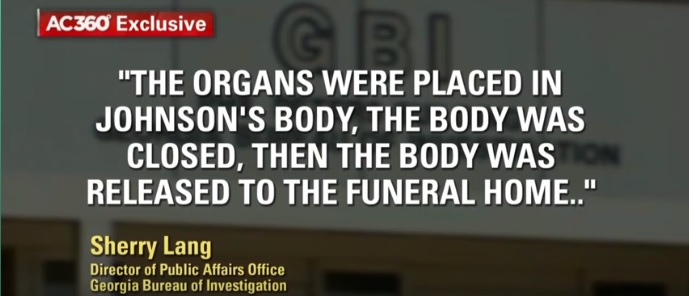
But what happened after his body arrived at funural home was anything but normal.
Kendrick´johnson body was filled with Newspaper stuff .

Neither had the founder of national embalming academy contacted by CNN hwo says

Nor had the president of the national association of medical examiners,.hwo told CNN .

So what exactly did harrington funeral home do with kendrick´s organs? and why was he stuffed with newspaper?

CNN went to their office to find out , but response nts.to us….no comme
How ever, in a letter to the johson attorney, harrington funural home owner , anthony harrington denied he resieved kendrick´s organs. he writes in part;

His internal organs were destroyd through natural precess and hence ,were discarded before the body was sent back .”
This is Kendrick Johnson all within a matter of 7-14 days. His body was found rolled up in a school gym wrestling mat the day after he went missing.
His body was in a crime lab environment within 24 hours yet the state claimed his internal organs (ie. brain, lungs, etc.) were extensively decomposed and required disposal.
Decomposition virtually stops when in cold chambers at crime labs so that pretty much eliminates any natural cause for the destruction of evidence.
The Lowndes County Sheriff’s Department claimed this to be a freak accident and a couple of weeks later the Georgia Bureau of Investigations rubber stamped the egregious claim basically falsifying documents to support this ongoing scandal of epic historic proportions

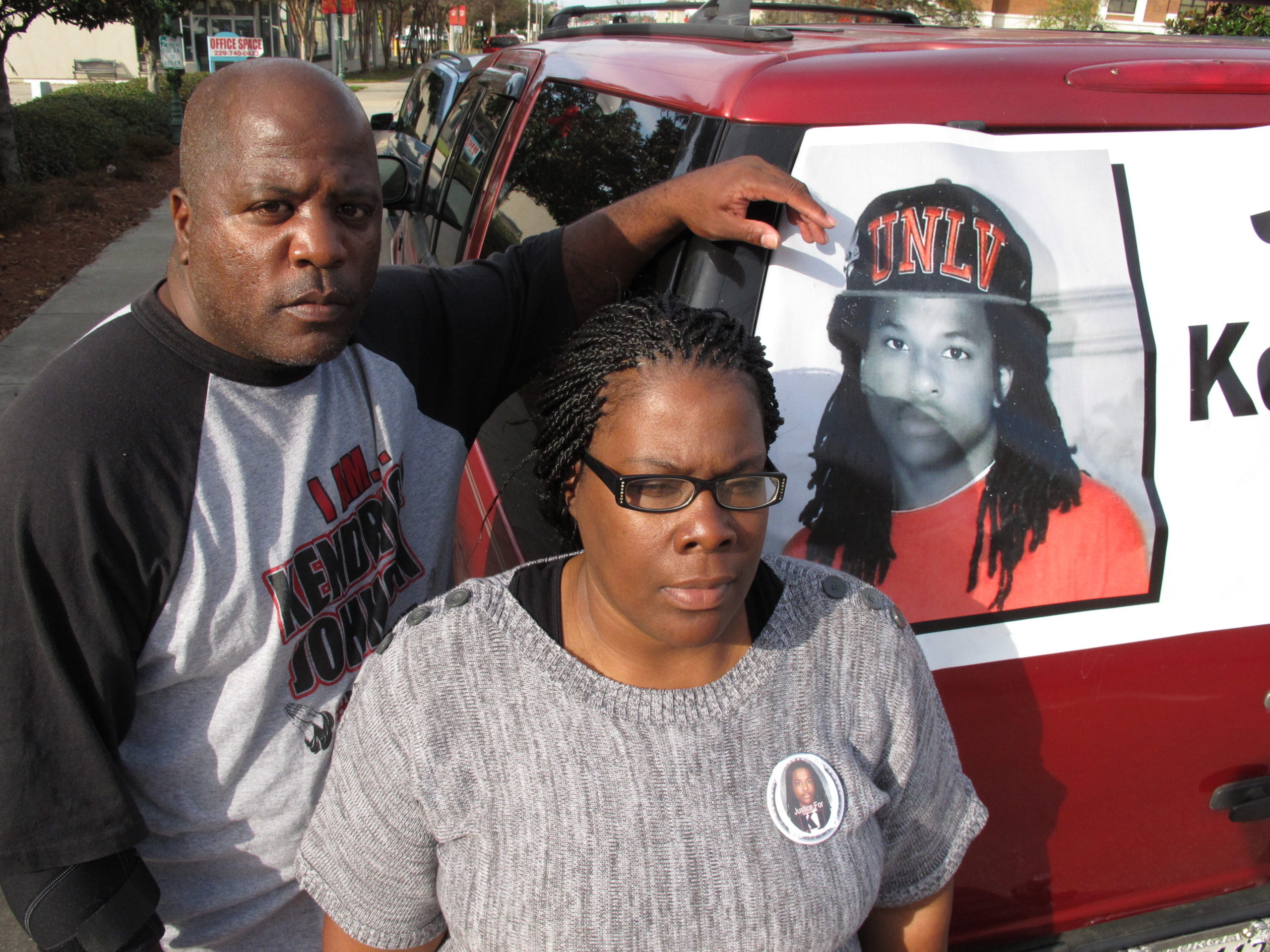

The sons of an FBI agent.
Johnson’s family filed a $100 million civil lawsuit against 38 individuals, stating that his death was a murder and that the respondents were participants in a conspiracy to cover up the homicide, which they claimed involved two sons of an FBI agent. That lawsuit was subsequently withdrawn. Georgia Judge Richard Porter ordered the Johnsons and their attorney to pay more than $292,000 in legal fees to the defendants, accusing them of fabricating evidence to support their claims.

it has been two long years since Kendrick Johnson’s body was found dead inside of a rolled up gym mat. It has, but the family isn’t allowing this case to be swept under the rug. Their son died on January 10th, 2013.
From The Daily Mail: The lawsuit also says Johnson’s slaying was covered up in a conspiracy involving the local school superintendent, the Valdosta police chief, the director of the Georgia Bureau of Investigation, five GBI agents, 17 sheriff’s investigators and deputies, the state medical examiner who conducted the autopsy and others.
‘Defendants from the various law enforcement agencies deliberately and maliciously mishandled the subject investigation in such a way that anyone who might ever be charged with (Johnson’s) death would never be convicted,’ the lawsuit says.
‘Defendants from the various law enforcement agencies deliberately and maliciously mishandled the subject investigation in such a way
that anyone who might ever be charged with (Johnson’s) death would never be convicted,’ the lawsuit says.
James Elliott, who represents the sheriff’s department as the attorney for Lowndes County, said the accusations ‘are unfounded and lack any basis in law or in fact.’
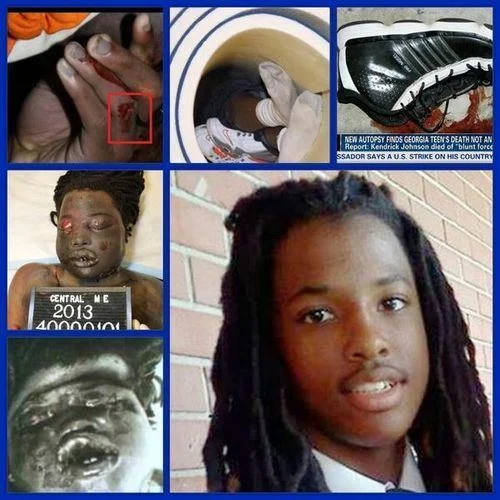
Johnson’s death was ruled a ‘freak accident’ by Lowndes County sheriff’s investigators. They claim Johnson became stuck upside down in a rolled up gym mat attempting to retrieve his show. No one was tried or arrested for his death.
Johnson’s parents, family and supports have never accepted the teenagers death as being an accident.
DEATH
Initial investigation
On January 11, 2013, the body of Kendrick Johnson was discovered in the gymnasium of Lowndes High School in Valdosta, Georgia, found headfirst in the center of a vertical rolled-up wrestling mat. The body was discovered by fellow students who had climbed up to the top of a cluster of mats, each of which stood nearly 6 feet (1.8 m) tall and 3 feet (0.91 m) wide. An autopsy by the Georgia Bureau of Investigation (GBI) stated that Johnson had died from positional asphyxia,[12] and the case was ruled an accidental death by the Lowndes County investigators.

Authorities hypothesized that Johnson had fallen into the mat while looking for a shoe and died after being unable to get out. Three students at Lowndes High School told investigators that it was common for some students to store their shoes behind or under the rolled up mats, Johnson was not wearing shoes when he was found. A student at the school said that he shared a pair of Adidas shoes with Johnson, and that after gym class Johnson would always “go to the mats, jump up and toss the shoes inside the middle of the hole.”

Lt. Stryde Jones, who headed up the investigation for the Lowndes County Sheriff’s Office, stated: “We never had credible information that indicated this was anything other than an accident.”Johnson’s family questioned this hypothesis. Unsatisfied with the result of the investigation, they hired an independent autopsy conducted by William R. Anderson with Forensic Dimensions in Heathrow, Florida, on June 15, 2013. Anderson claimed that his findings indicated traces of blunt force trauma to the right neck and soft tissues, and suggested the death was not accidental.

After the opinion of the private pathologist was released, Johnson’s family stated that they believed Johnson had been murdered. The family retained the services of attorney Benjamin Crump.On October 31, 2013, U.S. Attorney Michael J. Moore announced that his office would open a formal review into Johnson’s death.[5] Crump’s application to practice law in Georgia representing Johnson’s parents was not ruled on, and he withdrew from representing the family and is no longer participating in the case.
Johnson’s family filed a legal action to open a coroner’s inquest into his death. When the judge in that case delayed a decision, pending the outcome of the U.S. Attorney’s review, the family demanded that the governor of Georgia immediately authorize the inquiry instead. The family, together with the NAACP and other civil rights activists, then held a rally at the Georgia State Capitol in Atlanta. The governor’s office released a statement indicating that they would await the report of the U.S. Attorney.
Body

Johnson’s body in the gym mat after it was moved onto its side. The gym mat was discovered standing upright.
The independent autopsy found that some time after Johnson’s body was recovered from the mat and had passed through a funeral home, it had been stuffed with newspapers. The funeral home that processed the body following the FBI’s autopsy stated that they never received Johnson’s internal organs from the coroner; the organs were said to have been “destroyed through natural process” and “discarded by the prosector before the body was sent back to Valdosta,” according to the funeral home owner That left a void, which the funeral home filled.The funeral home owner stated that it is standard practice to fill a void in this fashion, and that cotton or sawdust may also be employed for this purpose. Johnson’s family filed a complaint with a regulatory body against the funeral home operator.

A subsequent investigation by the Georgia Secretary of State‘s office found that the funeral home did not follow “best practice” and that other material was “more acceptable than newspaper.” Nonetheless, the investigation cleared the funeral home of any wrongdoing. A spokesperson for the Secretary of State said that the investigation found that the funeral home “didn’t violate any rules.”The Johnson family subsequently filed a civil lawsuit against the funeral home, seeking monetary damages.

Johnson’s family requested that his body be exhumed for a second time and was granted permission by Valdosta city officials. On June 22, 2018, Johnson’s body was exhumed.
Surveillance tape

Surveillance footage of Johnson entering the gymnasium shortly before he died
In November 2013, 290 hours of surveillance tape from 35 cameras that covered the gym area were released to CNN following a court request.A forensic analyst enlisted by CNN found that tapes from two cameras are missing an hour and five minutes of footage, while another set was missing two hours and ten minutes of footage.
Some of the apparent lapses in coverage were found to result from camera systems that were not synchronized with one another. Time stamps between some separate camera systems differed by as much as twenty minutes for the same time period, giving the impression of a gap for portions of the footage where no gap existed.
Other missing footage was the result of the camera’s motion-activated function not being triggered. Camera systems were motion-activated, using a change in light pixels to turn recordings on and off The area where Johnson’s body was discovered, where the gym mats were stored, was not covered by surveillance cameras.

Attorneys for the Johnson family expressed fears that the camera footage was edited as part of a cover-up. However, analysis of the camera systems by the Valdosta Daily Times attempted to explain the anomalies, casting doubt on the theory of a cover-up. The president of the Valdosta-Lowndes County chapter of the Southern Christian Leadership Conference and the former lead investigator for that chapter have stated that they believe the attorneys for the Johnsons have “not been entirely truthful in their statements” and that there was no cover-up in this case.

A videotape shows 17-year-old Kendrick Johnson walking down a hallway and entering the gym in the Lowndes County High School in Valdosta, Ga., eight years ago on Jan. 10, 2013. That night his mother, Jacquelyn Johnson, called the emergency number 911 to report that her son had not come home from school.
On Jan. 11, Kendrick’s lifeless body was discovered, head down inside an upright 6-foot-high, rolled-up gym mat. His body was wedged in tightly, and his face was swollen beyond recognition.
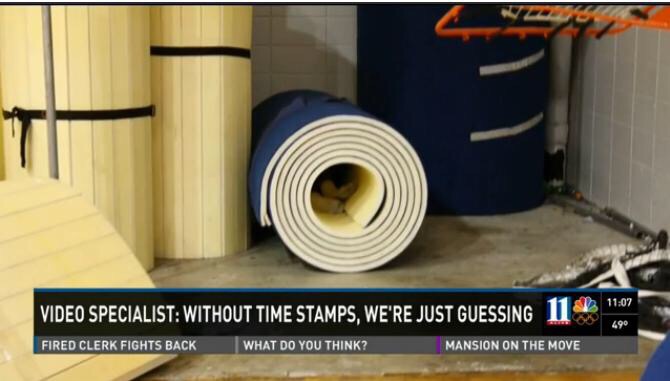
Legal actions
Johnson’s family filed a wrongful death lawsuit against Lowndes County Board of Education, its superintendent and the principal of Lowndes High School. The suit alleged that Johnson “was violently assaulted, severely injured, suffered great physical pain and mental anguish, and subjected to insult and loss of life” on January 10, 2013. While the lawsuit did not name the person or persons allegedly involved in the January 10 event, nor identify the race of alleged perpetrators, it implied a race-based dimension to the hypothetical assault.
The lawsuit alleged that the defendants were negligent and violated Johnson’s constitutional right to equal protection based on race. It alleged that the defendants ignored reports that, previously, Johnson had been repeatedly attacked and harassed by a white student. It alleged that Johnson was attacked on a bus trip 14 months prior to his death. The lawsuit further alleged that another student, Brian Bell, “had a history of provoking and attacking” Johnson at school, stating that the provocations took place “in the presence of the coaching staff and employees” after his mother complained about previous attacks.
The suit also alleged that school officials failed to “properly monitor the activities of students throughout all areas” of the campus and to “maintain a properly functioning video surveillance system.”

First interview: The Bell brothers say they have solid alibis for the day that Kendrick Johnson died and had nothing to do with his death, which was initially ruled accidental
- Brian and Branden Bell are being investigated over the death of Kendrick Johnson, who was found dead on January 11, 2013
- The brothers maintain they have alibis and were friends with Johnson
In August 2014, a $5 million lawsuit against Ebony magazine was filed, after the magazine published a series of articles naming two students as possible suspects in Johnson’s death. The magazine used pseudonyms but was otherwise accurate in descriptions of the boys, including the fact that their father was an FBI agent. The article used as a source an anonymous email to the sheriff’s office. In their lawsuit, the parents of the accused boys assert that their sons were not involved in the death, are not considered suspects, and have been harassed as a result of the publication.

In January 2015, Johnson’s family filed a $100 million civil lawsuit in the Superior Court of DeKalb County against 38 individuals. Respondents include three of Johnson’s classmates (two or three respondents are unnamed) and local, state, and federal officials: the school superintendent of Lowndes County, the Valdosta-Lowndes crime lab, the police chief of Valdosta, many sheriff’s deputies, the city of Valdosta, the state medical examiner, the GBI and five of its agents, and one FBI agent.
The lawsuit alleged that the FBI agent ordered his two sons and a classmate to attack Johnson, that his death was a murder, and that the respondents engaged in a conspiracy to cover up the homicide.Jim Elliott, the Lowndes County Attorney, stated that the allegations were “unfounded” and “baseless” and that any response would be made in court. All local Superior Court judges recused themselves from presiding over the case, preventing the lawsuit from being filed and heard in Lowndes County, citing their close proximity to the accused.


Surveillance footage from the school showed Brian Bell and what many speculated appeared to be blood on his upper right arm (left). In the interview he explained the sweater had a logo on it that said ‘RLX’ (right)

Alibi: Testimony placed Branden Bell (right) on a school bus on the way to a wrestling tournament at the time Johnson was last seen alive. Surveillance footage showed his younger brother Brian (left) in class
Shortly before the lawsuit was filed, U.S. Attorney Michael J. Moore said in a statement that a federal investigation was still open and that “the investigation has proven more complicated and taken longer than originally anticipated.” After Moore resigned in 2015, the case was transferred to the Northern District of Ohio under U.S. Attorney Steven Dettelbach.Shortly after receiving the case, Dettlebach also resigned. Despite these resignations, the Department of Justice investigation continued.
In November 2015, the Department of Justice filed a motion in the civil case to intervene and stay the case. The U.S. Attorney said allowing evidence discovery in the civil suit to continue would have a “chilling effect” on the federal investigation, which had expanded into investigating possible obstruction and grand jury witness tampering.
After the Justice Department’s motion was denied, Johnson’s parents dismissed their own wrongful death lawsuit, saying that they hoped to refile it after the conclusion of the federal investigation. They were subsequently sued for more than $850,000 in attorney fees and $1,000,000 in defamation damages.

On June 20, 2016, the Department of Justice announced that they would not be filing any criminal charges related to Johnson’s death, stating, “After extensive investigation into this tragic event, federal investigators determined that there is insufficient evidence to prove beyond a reasonable doubt that someone or some group of people willfully violated Kendrick Johnson’s civil rights or committed any other prosecutable federal crime.
“ On August 10, 2017, Georgia Judge Richard Porter ruled that Johnson’s family and their attorney had to pay more than $292,000 in legal fees to the dozens of respondents in their civil suit, writing “testimony shows that they had no evidence to support their claims that the [brothers] killed Johnson or that any of the other defendants engaged in a conspiracy to conceal the cause or manner of Johnson’s death.
On March 10, 2021, the case was officially reopened.However, Lowndes County Sheriff Ashley Paulk stated that he would not be claiming there was something wrong with the original investigation or that the original investigation’s conclusion of an accidental death was wrong. The sheriff also stated he does not consider the case to be a homicide. He further stated that two brothers, named in previous legal actions by the Johnsons, are not suspects.In January 2022, the second investigation was closed with no charges filed.
Kendrick Johnson: Sheriff says investigation into Georgia high school athlete’s death a ‘witch hunt’
Published
VALDOSTA, Ga. – Lowndes County Sheriff Ashley Paulk said the lengthy investigation into the death of a high school wrestler nine years ago determined it was accidental and there was no foul play.
Paulk released a synopsis of the case file of 17-year-old Lowndes County High School student Kendrick Johnson’s death. The teen’s body was found in January 2013 in an upright wrestling mat. The case was re-opened in March 2021.

The investigative synopsis states classmates found Johnson. A coach found out he was dead and contacted emergency personnel.
Investigators concluded he died in a freak accident. Johnson’s parents said classmates killed their son and law enforcement and school officials covered up the crime.
Evidence in Kendrick Johnson death investigation
In 2013, the Georgia Bureau of Investigation ruled Johnson’s death an accident, determining the cause of death was asphyxia. Three years later, federal officials closed the case.
“I do find it disturbing and unethical that this investigation seemed to turn into a ‘witch hunt’ after the FBI told the United States Attorney for the Middle District of Georgia that they had found nothing criminal, and they consequently were closing the case,” Paulk’s statement said.
Investigators learned wrestlers would occasionally store shoes inside wrestling mats, according to Paulk’s synopsis. Illustrations in the investigative file show Johnson apparently reaching into a mat to retrieve shoes. His body was found with the head facing downward and feet visible from the top of the mat.
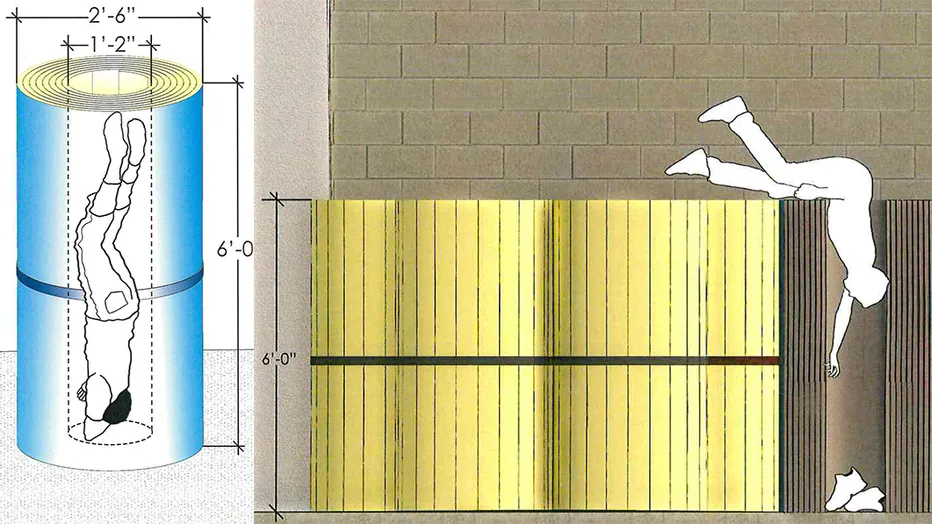
Investigators at the scene when Johnson’s body was discovered and a submission from the Valdosta-Lowndes County Crime Laboratory found no evidence of blunt force trauma or foul play. The crime lab submission found “signs of skin slippage on Johnson’s abdomen area, face and arm.” (Lowndes County Sheriff’s Office / FOX 5 Atlanta)
Investigators at the scene when Johnson’s body was discovered and a submission from the Valdosta-Lowndes County Crime Laboratory found no evidence of blunt force trauma or foul play. The crime lab submission found “signs of skin slippage on Johnson’s abdomen area, face and arm.”
Cameras saw Johnson at 1:27 p.m. on Jan. 10, 2013, “walking at a fast pace” near the area of the gym mats. That was the last time Johnson was seen alive.
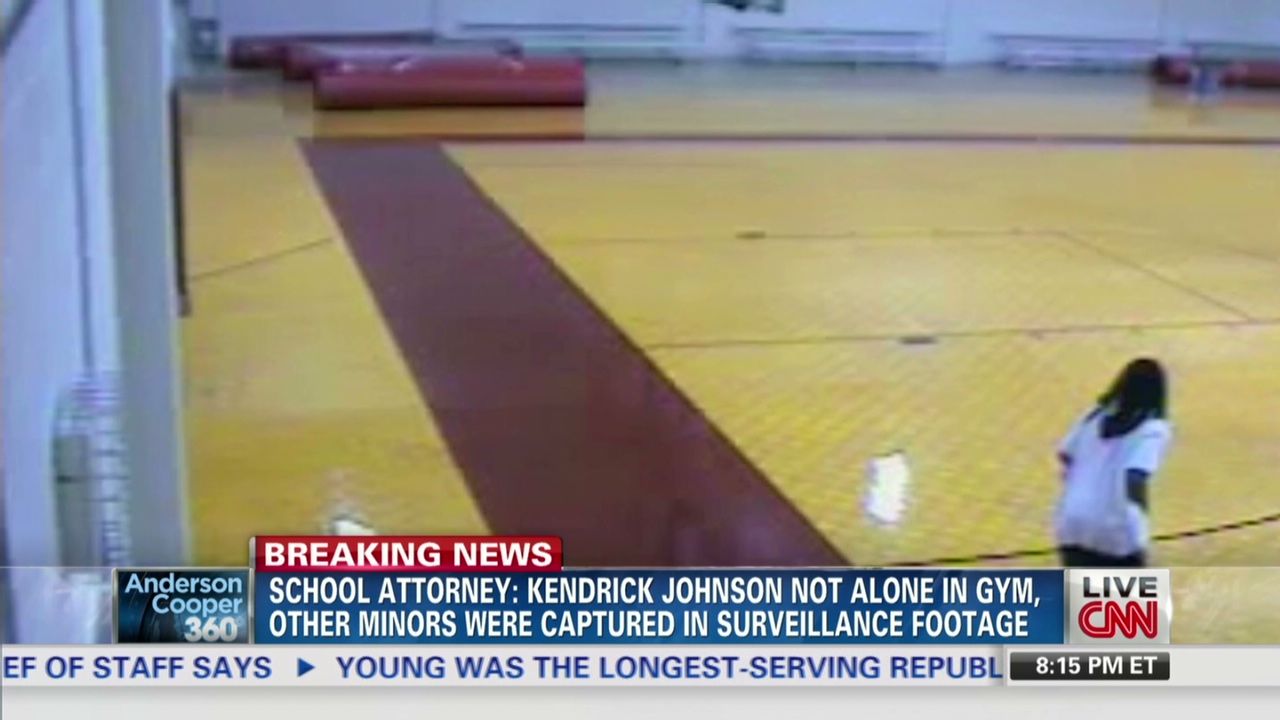
Concern of a cover-up
Paulk shot down the notion of a cover-up, saying “it would be impossible to conical any evidence” because of the involvement of multiple local, state and federal agencies.
Kendrick Johnson’s mother, Jackie Johnson, said she wanted justice for her son.
“Nobody really cares. Nobody wants Kendrick to get justice. It’s just like shut this family up, sending them on their way, but what they didn’t realize is the Johnson family is not going anywhere,” Jackie Johnson said.
Rumors surrounding Kendrick Johnson’s death
Paulk dispelled some alleged rumors regarding tensions between Johnson and a classmate. The two allegedly got into an altercation on a bus trip before a football game in 2011 and both were told they could not ride the bus back home.
“Testimony by other students stated that this fight did not appear to cause any animosity between the two; in fact, they later did a class project together,” Paulk said.

The FBI also determined there was no evidential basis to a rumor that the same classmate was angry with Johnson over a relationship he had with another classmate.
“The FBI states in two different documents there was no basis to this rumor and no evidence to support it,” Paulk said.
Ethics questions in Kendrick Johnson’s death investigation
In the synopsis, Paulk drew attention to the “witch hunt” that ensured after the FBI told the U.S. Department of Justice they found no evidence of criminal activity.
“I am quite sure that there will still be a contingent that will believe there was foul play,” Paulk states in the document. “I encourage everyone to study ALL the evidence in this file before forming an opinion.”
Paulk highlights several examples of “blatant coercion and intimidation” after the investigation’s initial closure.

Paulk notes a person was offered a “financial inducement” while giving testimony and a text message in evidence instructs a person to lie when testifying.
Paulk says a woman working with the DOJ and medical examiner performing autopsies “apparently developed a close relationship in which they address their correspondence to each other by their first names.” An email contains a statement from the woman to a male counterpart that allegedly states, “I had to make him feel like a man so he would be open to talking.”
After that meeting, an amended report stated the cause of death and manner of death were undetermined.
‘Finding Kendrick Johnson’ documentary
The case garnered national attention and was the subject of a documentary called “Finding Kendrick Johnson.”
The documentary, released in 2021, examines the case from the perspective of Johnson’s parents.


